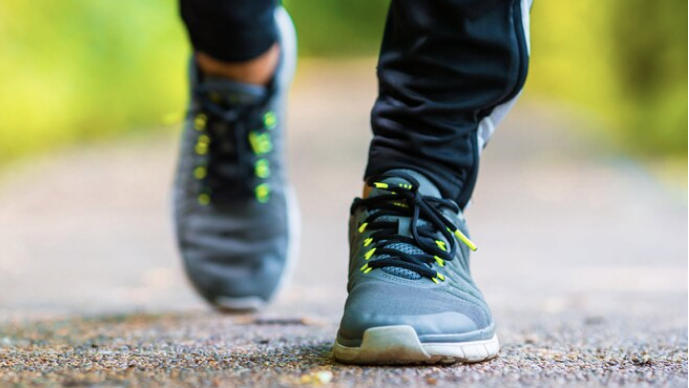Everyone is walking more these days and that’s great. Walking has been shown to boost your health, your mood, and even your creativity. Go out your front door at 6pm and most days you will see many of your neighbors enjoying the pleasures of walking around the neighborhood and getting some easy, quick exercise and fresh air. But did you know that most of us could improve how we walk to use our muscles better and protect ourselves from injury? Read on for some simple tricks to walk better.
Sports scientist Joanna Hall has dedicated her career to coaching people in how to walk the way their bodies were designed to, which no longer comes easily in this sedentary, screen-based era.
“I approach this as you would do if you wanted to get better at tennis,” she says. She developed her Walk Active programme to enable people to ease their aches and pains as they exercise, rather than exacerbate them. Lifestyle, ageing and injuries mean that when we put one foot in front of the other, the way we use our muscles may be, she says, “suboptimal for improving our posture, or reducing joint strain and getting the most out of walking”.
According to Hall, there are four common aspects we get wrong, and each has knock-on effects on the body. Firstly, instead of propelling ourselves forwards by pushing off with the back foot, like an ice-skater, we try to use our stepping foot to power us along. This is because sitting down too much has made our hip flexor muscles short and tight. Hall describes the necessary adjustment as the subtle difference between stepping into a space (wrong) and pushing off from a space, which will recruit the right muscles up the backs of your legs. “You use your glutes and you open up the core,” says Hall.
The second problem is what Hall calls a passive foot strike. The movement provided by the joints in our feet offers suspension and balance but we often plod along flatly instead, leaving us compromised. “That’s what causes knee discomfort,” says Hall. “It can create slight misalignment of the back, stiffness of the shoulders.”
The third thing to watch out for is letting your head hang forwards. Screens, reading and desk work have made this the default position, which is a bit of a disaster. “When the head is slightly forward,” says Hall, “the muscles of the upper back and the shoulders have to contract to hold it there. The shoulders come forward and can stiffen. Back mobility becomes restricted and you will not be able to rotate your spine from the hips.” Try lifting your head before looking over your shoulder and you may discover, as I did, that you can turn your head much further all of a sudden.
Finally, our arms tend to hang awkwardly or we force them into tense, power-walk movements, when what they want is to dangle freely. If you get steps one to three right, this should happen naturally. Hall has devised various drills to help correct these bad habits, such as measuring with your hand the gap between your bottom rib and your hip, and between your collarbone and your earlobe, and then adjusting your posture to lengthen those gaps.
Click to read the full article here.

